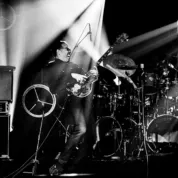
Jazz, a genre steeped in cultural richness and historical depth, stands as a testament to the creative spirit of humanity. Emerging from the diverse and vibrant communities of New Orleans, it has echoed through the corridors of time, evolving with each era it has touched. This section will navigate through the intricate journey of Jazz, from its early roots intertwined with African rhythms and European harmonies to its current status as a global and multifaceted art form, embodying a spectrum of emotions and experiences.
What is Jazz Music?
Jazz is a culturally significant music genre that has been shaped by societal trends, movements, and histories for over 100 years. The 8 characteristics of jazz are an artistic expression rooted in the African American experience, characterized by its rhythmic complexity, improvisational nature, and emotional depth. It matters because it represents a fusion of diverse cultural influences, showcasing creativity and resilience in the face of adversity.
Through improvisational jazz has encouraged freedom of expression, fostering a sense of unity and understanding among diverse groups. Its influence can be seen in the evolution of rock and roll, R&B, hip-hop, and even classical music. It has inspired musicians across genres to experiment and innovate, leading to the birth of new music styles and movements.
It has continually reinvented itself, evolving and adapting to various musical traditions and societal changes. And this adaptability has kept it relevant and engaging for new generations of listeners and musicians. Jazz endures because it's not just a style of music; it's a way of experiencing and interpreting the world, a universal language that speaks to the enduring human spirit of exploration, expression, and connection.
Jazz History Timeline
The impact jazz has had on society for over 100 years is profound. It emerged as a voice of liberation and social commentary, often reflecting the struggles and aspirations of the African American community. From there it blossomed into a platform for individual expression, challenging the status quo, and contributing significantly to the civil rights movement. Its improvisational element encouraged freedom of expression, fostering a sense of unity and understanding among diverse groups that is still impacting the world today.
The Evolution of Jazz: From the 1950s to the 2000s
Where Did Jazz Originate?
Late 19th - Early 20th Century
The Jazz history timeline starts in New Orleans, a city where cultural diversity and musical fusion gave birth to an entirely new sound. In the late 19th century, African American musicians began blending elements from blues, ragtime, and marching band music, creating a unique style that would later evolve into Jazz. This was the era of Buddy Bolden, often hailed as the first Jazz musician, whose band was famous for its loud, improvised music that incorporated blues and ragtime. Jazz quickly became the voice of a new generation, echoing through the streets in parades, funerals, and bars. It was not just a musical style but a form of expression, embodying the joys and struggles of the African American experience.

Jazz Age and Swing Era Jazz
1920s - 1940s
In the 1920s, Jazz exploded in popularity, becoming the soundtrack of the Roaring Twenties. This second era on the Jazz history timeline, known as the Jazz Age, saw the music move from the fringes to the center of American culture. It was during this time that figures like Louis Armstrong revolutionized Jazz, introducing solo performances that showcased the artist's skill and personality. Meanwhile, Duke Ellington led his orchestra at the Cotton Club in Harlem, bringing the characteristics of jazz to a broader audience. The 1930s and 1940s ushered in the Swing Era, dominated by big bands and danceable tunes. Bands led by Benny Goodman, Count Basie, and others toured the country, and Jazz became a symbol of youth and rebellion. The Swing Era also saw the first all-female bands, breaking gender barriers in the world of Jazz.
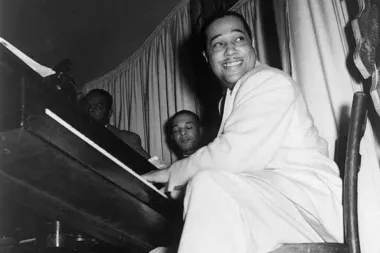
Jazz Bebop
1940s - 1950s
The end of World War II created significant shifts to the characteristics of Jazz. The Bebop era emerged on the Jazz history timeline as a form of musical rebellion against the commercialized Swing music. Musicians like Charlie Parker and Dizzy Gillespie began experimenting with complex chord progressions, irregular phrasing, and rapid tempos. This style was less dance-oriented and more focused on showcasing the musicians' technical skills and improvisational abilities. Bebop sessions often took place in small, intimate clubs, setting a precedent for modern Jazz venues. This era also paved the way for other styles, such as Cool Jazz, which offered a more relaxed and melodic alternative to the frenetic pace of Bebop.
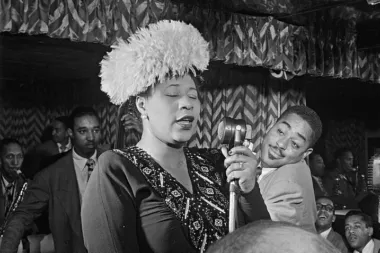
Cool Jazz, Hard Bop, and Modal Jazz
1950s - 1960s
The 1950s witnessed the rise of Cool Jazz, characterized by its smooth sound and sophisticated arrangements. Artists like Miles Davis and Dave Brubeck were at the forefront of this style, appealing to a more diverse audience. In contrast, Hard Bop emerged as a reaction to Cool Jazz, re-emphasizing the blues and gospel elements in Jazz. It was more rhythmic and soulful, with artists like Art Blakey and Horace Silver leading the way. The late 1950s and early 1960s also saw the advent of Modal Jazz, which used musical modes rather than chord progressions as a harmonic framework. This style was popularized by Miles Davis's "Kind of Blue," one of the best-selling Jazz albums of all time.
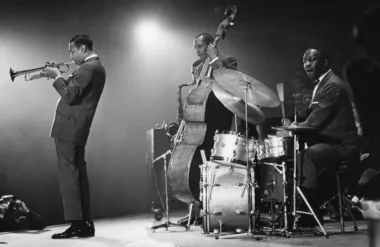
Free Jazz and Jazz Fusion
1960s - 1970s
The 1960s musicians experimented radically with the characteristics of jazz. Artists like Ornette Coleman and John Coltrane, broke away from traditional structures, emphasizing free improvisation and complex rhythms. This style mirrored the social and cultural upheavals of the 1960s. During the 1970s the Jazz history timeline saw the emergence of Jazz Fusion, which blended Jazz with rock, funk, and world music. Artists like Return to Forever, Mahavishnu Orchestra and Weather Report introduced electronic instruments and new soundscapes, expanding the audience for Jazz and pushing its boundaries in ways that was almost unrecognizable as "jazz".
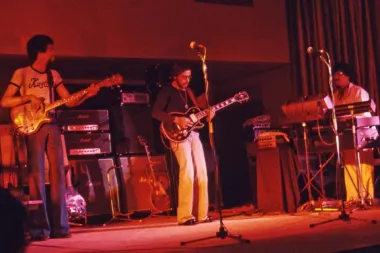
Jazz Rap
1990s to 2010s
In addition to this experimental wave, Jazz has also experienced a fusion with mainstream music genres. The 1990s and early 2000s saw a notable integration of Jazz into Hip-Hop, with influential artists like Gang Starr and A Tribe Called Quest incorporating samples from Jazz legends into their tracks. As a result, "Jazz Rap" emerged as a Hip-Hop sub-genre, alongside other new experimental genres such as "Acid Jazz", which combined jazz and hip-hop with elements of funk, soul, and even disco. This melding of genres brought the niche and complex nature of Jazz into popular music forms, resulting in a rich, innovative sound that significantly influenced the course of modern music. This period marked a pivotal moment on the Jazz history timeline, as it expanded its reach and appeal through these creative fusions, showcasing its versatility and adaptability.
Modern Jazz
1980s to Present
Since the 1980s, the Jazz history timeline has witnessed a significant evolution, not only by intertwining with the diverse genres mentioned above, but by embracing global cultural influences. Traditional Jazz experienced a revival, notably led by artists like Wynton Marsalis, who emphasized the genre's foundational styles. At the same time, a new wave of modern experimental Jazz began to emerge. Artists such as Bela Fleck, Christian McBride, and Esperanza Spalding, played pivotal roles by pushing the boundaries of Jazz with innovative compositions and performances. These artists successfully blended the essence of traditional Jazz with contemporary experimental techniques, creating a unique sound that resonated with both Jazz purists and new audiences.
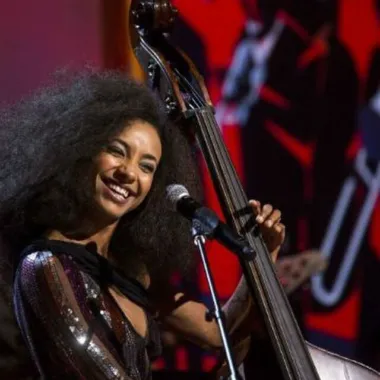
As Jazz entered the 21st century, digital technology's impact on the genre became increasingly evident. Contemporary Jazz artists have (and will continue to) embrace digital tools and platforms, enabling new sound explorations and broader global collaborations. Additionally, Jazz continues to thrive in live settings, with festivals around the world drawing large, diverse crowds. These festivals not only celebrated the rich Jazz history timeline, but also its ongoing evolution, reflecting the genre's enduring ability to reinvent its core elements while staying true to its roots. The resilience and adaptability of Jazz, from traditional forms to modern digital expressions, underscore its lasting significance in the global music landscape.
The 8 Characteristics of Jazz
From the spontaneous creativity of improvisation to the soul-stirring rhythms and complex harmonies, the 8 characteristics of jazz have uniquely shaped its dynamic sound. We will explore how these elements interplay, creating a genre that deeply resonates with innovation and tradition. The 8 characteristics of jazz have provided the individuality of its musicians and the iconic instruments that give voice to this timeless genre.
1. Improvisation
Improvisation is the heart and soul of the characteristics of Jazz, an element that distinctly sets it apart from many other music genres. This improvisational nature dates back to the early 20th century, where jazz musicians would often gather for jam sessions, using these opportunities to showcase their individual talents and spontaneously create music together. Legendary figures like Louis Armstrong and Charlie Parker are renowned for their improvisational skills. Armstrong, with his inventive trumpet solos, and Parker, with his complex saxophone improvisations, both pushed the boundaries of jazz, introducing new layers of creativity and complexity.
In jazz, improvisation isn't just a showcase of technical skill; it's a form of personal expression. Each musician's improvisation is unique, like a fingerprint, often reflecting their emotions, experiences, and cultural background. This aspect of jazz speaks to the African American roots that mark the beginning of the Jazz history timeline, where music was a form of storytelling and emotional expression.
Moreover, improvisation in jazz is not entirely unstructured. It typically occurs within the framework of a tune, where musicians play around chord progressions, creating new melodies and rhythms on the spot. This requires a deep understanding of music theory and a strong sense of timing and rhythm. The result is a captivating, unpredictable performance that makes each rendition of a jazz piece distinct and new.
The influence of jazz improvisation has extended beyond its genre, inspiring improvisational elements in rock, country, and even electronic music. This characteristic not only underlines the uniqueness of jazz but also highlights its impact on the broader musical landscape.
2. Rhythm
Jazz has always been greatly characterized by its complex rhythm and distinctive swing. Jazz rhythms often incorporate syncopation, where the emphasis is on off-beats or weaker beats in the measure. This syncopation creates a sense of spontaneity and fluidity, making jazz rhythmically vibrant and engaging.
The concept of swing, which is a central characteristic of Jazz, refers to a rhythmic feel where certain notes are lengthened while others are shortened, contrary to their notated lengths. This creates a 'groove' or 'swing feel' that is quintessentially jazz. The swing rhythm was particularly prominent in the Big Band era of the 1930s and 40s, led by bandleaders like Duke Ellington and Count Basie, whose orchestras perfected this style.
Jazz also frequently employs polyrhythms, the simultaneous use of contrasting rhythmic patterns. This characteristic has roots in African music traditions, where multiple rhythms are often played in conjunction. In jazz, this results in rich, layered rhythmic textures that are both complex and captivating.
Drummers in jazz play a pivotal role in shaping the rhythm. Iconic drummers like Max Roach and Art Blakey were masters of innovative rhythmic patterns, pushing the boundaries of jazz rhythm and influencing generations of musicians. Their work highlights how rhythm in jazz is not just a background element but a crucial component that drives the music.
The characteristics of Jazz have witnessed an evolution of various rhythmic styles, from the smooth rhythms of Cool Jazz to the complex, erratic rhythms of Bebop. Each sub-genre of jazz has contributed to the rich tapestry of rhythmic styles in the genre, showcasing the diversity and adaptability of jazz rhythm.
3. Blue Notes
One of the most defining characteristics of Jazz are blue notes, which provide its distinctive, soulful sound. These notes involve the slight bending or flattening of certain pitches, particularly the third, fifth, and seventh notes of a scale. This creates a sound that is somewhat melancholic and 'blue,' a quality that is central to the emotional expressiveness of jazz.
The use of blue notes can be traced back to African American musical traditions, particularly the blues, from which jazz heavily draws. The blues, with its expressive bent notes and emotive vocal stylings, significantly influenced early jazz musicians. These musicians incorporated the emotional depth and expressive qualities of the blues into their music, using blue notes to convey a range of feelings from longing to joy.
One of the most significant aspects of blue notes in jazz is their ability to convey a sense of tension and release. This is often achieved through the resolution of a blue note to a major note, creating a poignant musical narrative within a piece. This characteristics of Jazz is evident in the works of jazz greats like Billie Holiday and John Coltrane, whose mastery of emotional expression through blue notes has left a lasting impact on the genre.
Moreover, the use of blue notes illustrates the improvisational nature of jazz. Musicians often play with these notes, stretching and bending them in different ways to add a personal touch to their performance. This further emphasizes the individuality and expressiveness are a core characteristic of Jazz music.
The blue note's influence extends beyond jazz, having shaped the sound of various music genres, including rhythm and blues, rock and roll, and even pop music. Its integration into these genres showcases the widespread impact of this quintessential characteristic of Jazz.
4. Polyrhythms
Polyrhythms in jazz involve the simultaneous use of two or more conflicting rhythms, creating a complex and richly textured sound. This characteristic, rooted in African musical traditions, adds to the depth and sophistication of jazz. African rhythms often feature different rhythmic patterns played concurrently, a practice that was carried over into jazz, particularly by African American musicians drawing from their cultural heritage.
The use of polyrhythms in jazz can be traced back to New Orleans, the birthplace of jazz, where a melting pot of musical influences converged. Early jazz musicians blended African rhythms with European musical structures, creating a unique sound characterized by rhythmic complexity and vitality. Drummers like Baby Dodds and later, Elvin Jones, are renowned for their polyrhythmic prowess, demonstrating how multiple rhythms can coexist and interact to create a dynamic musical tapestry.
In jazz, polyrhythms often manifest in the interplay between the rhythm section and the soloists. While the rhythm section, comprising instruments like the bass and drums, lays down a steady rhythmic foundation, the soloists overlay this with contrasting rhythmic patterns. This creates a lively and engaging musical dialogue, a hallmark of jazz's interactive nature.
The use of polyrhythms is particularly evident in sub-genres like Afro-Cuban jazz, where the influence of African and Caribbean rhythms is prominent. Musicians in this style often incorporate complex, interlocking rhythmic patterns, adding a distinctive flavor to the music.
Polyrhythms not only add to the rhythmic diversity of the characteristics of Jazz, but also challenge and inspire musicians and listeners alike. They invite a deeper engagement with the music, as one navigates the intricate layers of rhythm that define the genre.
5. Harmony
Jazz harmony is renowned for its complexity and innovation. Unlike classical harmony, which tends to follow strict rules, jazz harmony is more fluid and allows for a wide range of chord progressions and substitutions. This characteristic gives jazz its unique harmonic language, full of rich, extended chords and unexpected shifts that challenge and engage both musicians and listeners.
The evolution of jazz harmony can be seen in the works of pioneering musicians like Duke Ellington and Thelonious Monk. Ellington’s compositions, for instance, showcased sophisticated harmonic concepts that were ahead of their time, blending dissonance and consonance in innovative ways. Monk, known for his idiosyncratic approach to piano playing, often used unusual chord voicings and progressions, pushing the boundaries of the characteristics of Jazz.
One key aspect of jazz harmony is the use of extended chords, such as seventh, ninth, eleventh, and thirteenth chords. These chords add layers of complexity and color to the music, creating a more nuanced and expressive sound. Another important feature is chord substitution, where musicians replace standard chords with alternative ones to create different harmonies. This technique is widely used in jazz improvisation, allowing musicians to explore new harmonic possibilities.
The development of jazz harmony has also been influenced by other music genres. For example, the modal jazz of the late 1950s and 1960s, as exemplified by Miles Davis and John Coltrane, introduced a new approach to harmony, relying on modes rather than traditional chord progressions. This shift opened up new avenues for improvisation and compositional structure.
Jazz harmony continues to evolve, with contemporary musicians constantly experimenting with new harmonic ideas. This ongoing innovation ensures that the characteristics of Jazz remain a vibrant and progressive musical form.
6. Call and Response
The call and response pattern in jazz is a conversational element that reflects its African roots. This characteristic involves a musical statement by one musician or section (the call) being answered by another musician or section (the response). This interactive aspect is key to the communal and improvisational nature of the characteristics of Jazz.
This pattern can be traced back to African and African American musical traditions, where music often served as a form of communal dialogue. In jazz, call and response has been a fundamental part since its inception, contributing to the dynamic and collaborative nature of the genre. It’s evident in the trading of fours in a jazz ensemble, where musicians take turns playing four-bar segments, responding to each other's musical ideas.
Iconic jazz figures such as Louis Armstrong and Bessie Smith utilized call and response effectively in their performances, creating a lively and engaging musical conversation. In big band settings, this pattern often occurs between the brass and reed sections, or between the band and a soloist, adding to the theatrical and interactive quality of the music.
Call and response in jazz is not just about the notes played; it's also about the rhythm, dynamics, and emotion. It requires active listening and quick thinking, as musicians respond to and build upon each other's ideas. This characteristic embodies the spontaneity and expressiveness of jazz, making performances dynamic and unpredictable.
The influence of call and response extends beyond the characteristics of jazz, influencing genres like gospel, blues, and rock. Its presence in these genres speaks to the fundamental human desire for musical conversation and connection.
7. Individuality and Expression
Each jazz performance a unique reflection of the artist's personality and experiences. This characteristic sets jazz apart from many other musical genres. Jazz musicians are not just performers; they are storytellers, conveying emotions and narratives through their instruments. The Jazz history timeline is replete with examples of musicians who have used their unique voices to shape its evolution.
Take, for instance, the legendary saxophonist John Coltrane. His album "A Love Supreme" is a masterclass in personal expression, using complex modal improvisations and emotional intensity to convey a deeply spiritual journey. Similarly, Billie Holiday used her distinctive vocal style to infuse songs with a raw, emotional depth that spoke of her life's trials and tribulations.
The characteristics of jazz provide a platform for cultural expression. Its roots in African-American communities meant it inherently carried the nuances of their struggles, triumphs, and perspectives. The genre has been a voice for social change, with artists like Charles Mingus and Max Roach using their music to comment on social issues, from racial injustice to political upheaval.
The freedom of expression in jazz extends to the use of instruments as well. For example, Miles Davis’s use of the muted trumpet created a sound that was introspective and melancholic, becoming a signature of his style. In contrast, Louis Armstrong’s exuberant trumpet playing and scat singing exemplified his larger-than-life persona.
This trait of jazz underscores its vitality and relevance. By championing individual expression, jazz becomes a living, breathing art form, constantly evolving with each artist's contribution.
8. Instrumentation
The use of instruments in jazz is both diverse and integral to its sound. While certain instruments have become synonymous with the genre, jazz's inclusive nature has allowed for a wide range of instruments, each bringing its own color to the musical palette.
The saxophone, for instance, is often seen as the quintessential jazz instrument. Its ability to mimic the human voice, from sultry whispers to impassioned cries, makes it perfect for the expressive demands of jazz. Icons like Charlie Parker and Sonny Rollins have pushed the boundaries of what the saxophone can do, transforming it into a vehicle for complex improvisations and expressions.
The piano, another staple, serves as the backbone of many jazz ensembles. It provides both rhythmic support and harmonic complexity. Pianists like Duke Ellington and Thelonious Monk are celebrated for their innovative compositions and distinctive playing styles, which have left an indelible mark on the genre.
Trumpets and trombones, central to the brass section, have played a pivotal role in jazz’s development. From the early New Orleans style to the bebop revolution, trumpeters like Louis Armstrong and Dizzy Gillespie have showcased the instrument's versatility and expressive range.
Rhythm section instruments, such as the double bass and drums, are crucial in jazz. They provide the foundational groove and tempo over which other instruments improvise. Bassists like Charles Mingus and drummers like Buddy Rich have elevated these instruments from mere timekeepers to central voices in the ensemble.
Other instruments like the clarinet, vibraphone, and even the guitar have found a place in the characteristics of jazz, each contributing to the genre's rich and evolving sound. The diversity and adaptability of instruments in jazz reflect its ethos: a genre boundless in its possibilities and inclusive in its approach.
The Evolution of Jazz: From Big Band to Fusion
An Everlasting Echo of Creativity
The 8 characteristics of Jazz, have created more then just another music genre. They've created a sound and movement that stands as a testament to the relentless creativity and resilience of the human spirit. Its evolution from the streets of New Orleans to a global language of emotion and innovation mirrors our collective journey through the Jazz history timeline. As you reflect on jazz's rich tapestry, remember that each note played is a dialogue between past and present, a harmonious blend of tradition and transformation. Jazz is not just music; it's a story of adaptation and expression, continually unfolding and inviting us to listen, learn, and be inspired.



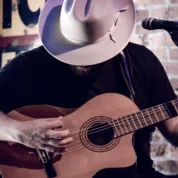
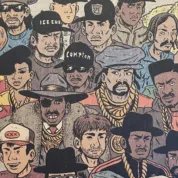

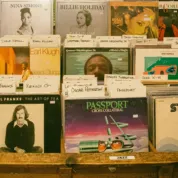
Leave a Reply!
I really :winking_face: enjoyed your writing on jazz history I stared playing bebop jazz around Philly in Jr. High school. I lived in Tioga section of Philly near Lee Morgan. At 82 iam still playing n teaching...BEBOP..LONG LIVE BIRD N TRANE..THATS JOHN COLTRANE. PEACH WITH :red_heart: N HAPPYNESS
Thanks! Appreciate the kind words
I was born into a jazz family.my dad was Marky markowitz a trumpeter who spent 10 years on the road in 5 big bands including woody Herman and buddy rich in the40s and then went on to be a great first call studio musician in NYC during the 60s,70s and 80s till his passing in 1986.my mom was a great scat singer and influenced me greatly in her technique and beautiful voice.players like Clifford brown and miles,bird and dizzy created such a wellspring of love of harmonies and groove for generations to come.because of their contributions jazz will live forever in the youth that challenge themselves to achieve that level of beauty and joy :smiling_face_with_closed_eyes::smiling_face_with_closed_eyes:
Outstanding article. I would like to have seen mention of Herbie Hancock & Django Reinhart and their influence on piano, jazz funk and guitar.
In the last 4 months, I'm new to jazz and in my 40s. I love learning about key terms as a non-musician (I mean, it's in my soul, but I have to think through the music with words). "Trading of fours" and "blue notes" were concepts I never realized I didn't understand. Thanks for this article on the history and the characteristics.
Notably absent were extra-national forms like Afro-Cuban and Brazilian jazz Bossa Nova, Samba which influenced/invaded popular music, practically going mainstream.
Truly enjoyed this article on Jazz from its beginning through jazz fusion and beyond. My focus in listening to jazz is fusion but still love the innovation of this present time. Thank you.